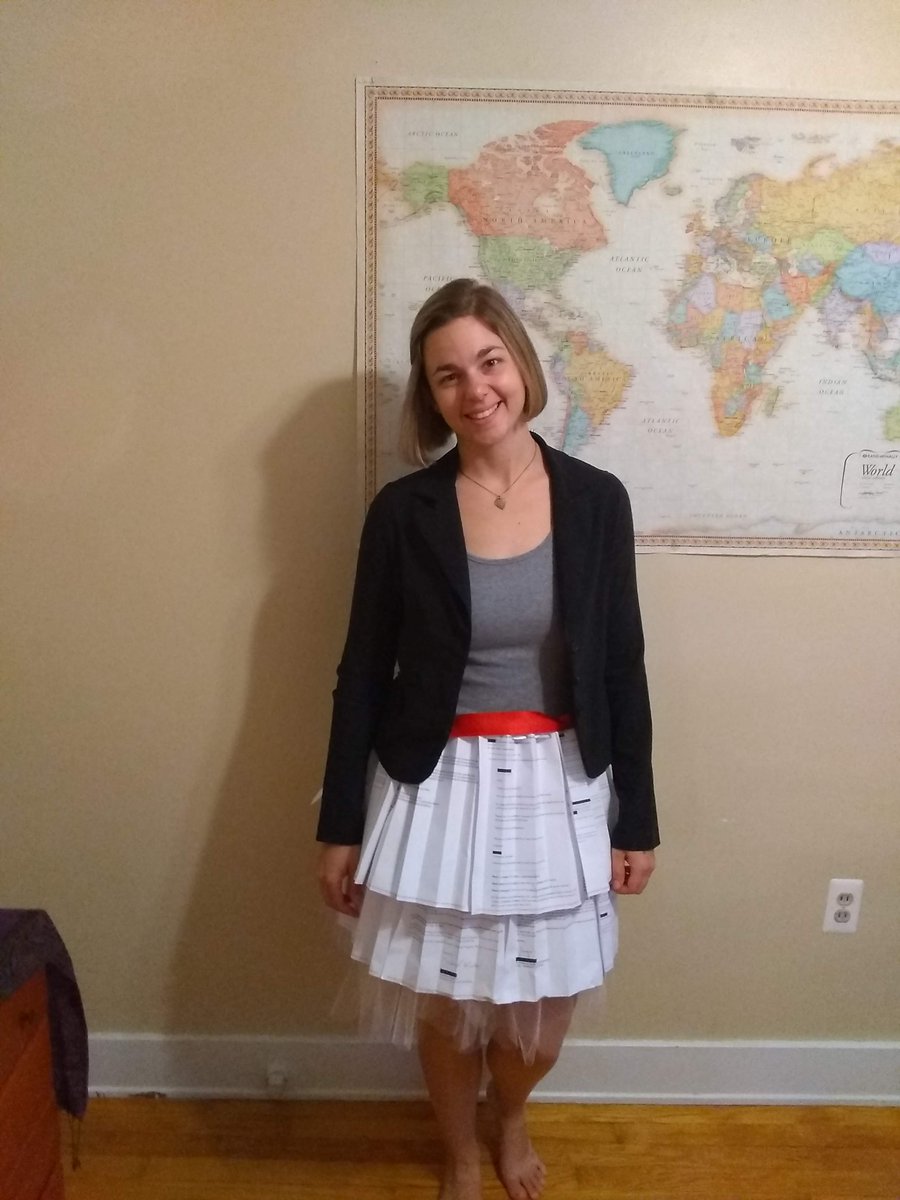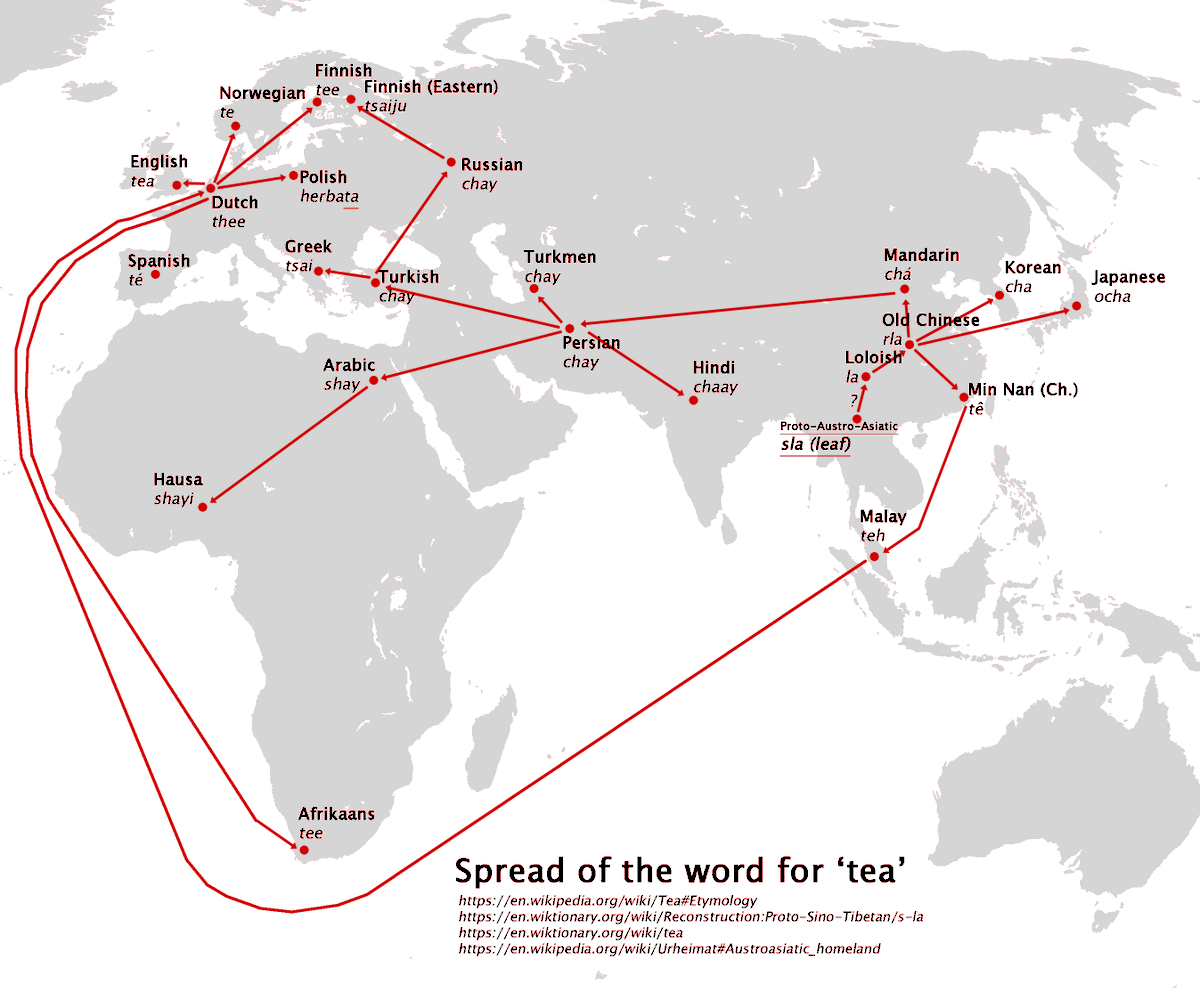[Most Recent Entries] [Calendar View]
Friday, November 8th, 2019
| Time | Event |
| 9:22a | What to Wear to a Successful PhD Thesis Defense? A Skirt’s Worth of Academic Rejection Letters
Some people are paralyzed by rejection. Others, like Michigan State University’s Earth and Environmental Sciences PhD candidate, Caitlin Kirby, sport rejection like a mantle of honor... or more accurately, a pleated skirt falling to just below mid-thigh. "Successfully defended my PhD dissertation today!" Kirby wrote in a Tweet that has since garnered over 25,000 likes. "In the spirit of acknowledging & normalizing failure in the process, I defended in a skirt made of rejection letters from the course of my PhD." The custom garment, which Kirby teamed with a dark blazer and red waistband, was organized in two tiers, with a tulle ruffle peeping out beneath. MSU’s Career Services Network’s Director of Employer Relations, Karin Hanson, told the Lansing State Journal that rejection comes as a shock to many high achieving MSU students. Kirby’s decision to upcycle 17 disappointing letters received over the course of her academic career was partially inspired by a Parks and Recreation episode in which the skirt of Leslie Knope's wedding dress is a wearable collage of newspaper articles about the character, drawn from earlier episodes More to the point, Kirby’s skirt is part of an ongoing campaign to acknowledge rejection as a necessary, if painful, part of academic growth.
And, as she later noted in a tweet:
Kirby’s letters were culled from a variety of sources—scholarship applications, submissions to academic journals, and proposals for conference presentations. Unfortunately and We regret to inform you are recurrent motifs. About 8 letters were left on the cutting room floor. But she is prepared to lower her hemline, when she starts applying for jobs, following a stint at the Research Institute for Urban and Regional Development in Dortmund, Germany, the result of a successful Fulbright application. Follow Kirby’s example and turn your temporary setbacks into a power skirt, using the tutorial above. via Boing Boing Related Content: Read Rejection Letters Sent to Three Famous Artists: Sylvia Plath, Kurt Vonnegut & Andy Warhol T.S. Eliot, as Faber & Faber Editor, Rejects George Orwell’s “Trotskyite” Novel Animal Farm (1944) Gertrude Stein Gets a Snarky Rejection Letter from Publisher (1912) Ayun Halliday is an author, illustrator, theater maker and Chief Primatologist of the East Village Inky zine. Join her in NYC on Monday, December 9 when her monthly book-based variety show, Necromancers of the Public Domain, resurrects Dennison’s Christmas Book (1921). Follow her @AyunHalliday. What to Wear to a Successful PhD Thesis Defense? A Skirt’s Worth of Academic Rejection Letters is a post from: Open Culture. Follow us on Facebook, Twitter, and Google Plus, or get our Daily Email. And don't miss our big collections of Free Online Courses, Free Online Movies, Free eBooks, Free Audio Books, Free Foreign Language Lessons, and MOOCs. |
| 12:00p | A Map of How the Word “Tea” Spread Across the World
When I order a cup of tea in Korea, where I live, I ask for cha (?); when traveling in Japan, I ask for the honorific-affixed ocha (??). In Spanish-speaking places I order té, which I try to pronounce as distinctly as possible from the thé I order in French-speaking ones. And on my trips back to United States, where I'm from, I just ask for tea. Not that tea, despite its awe-inspiring venerability, has ever quite matched the popularity of coffee in America, but you can still find it most everywhere you go. And for decades now, no less an American corporate coffee juggernaut than Starbucks has labeled certain of its teas chai, which has popularized that alternative term but also created a degree of public confusion: what's the difference, if any, between chai and tea? Both words refer, ultimately, to the same beverage invented in China more than three millennia ago. Tea may now be drunk all over the world, but people in different places prefer different kinds: flavors vary from region to region within China, and Chinese teas taste different from, say, Indian teas. Starbucks presumably brands its Indian-style tea with the word chai because it sounds like the words used to refer to tea in India. It also sounds like the words used to refer to tea in Farsi, Turkish, and even Russian, all of them similar to chay. But other countries' words for tea sound different: the Maylay teh, the Finnish tee, the Dutch thee. "The words that sound like 'cha' spread across land, along the Silk Road," writes Quartz's Nikhil Sonnad. "The 'tea'-like phrasings spread over water, by Dutch traders bringing the novel leaves back to Europe." "The term cha (?) is 'Sinitic,' meaning it is common to many varieties of Chinese," writes Sonnad. "It began in China and made its way through central Asia, eventually becoming 'chay' (???) in Persian. That is no doubt due to the trade routes of the Silk Road, along which, according to a recent discovery, tea was traded over 2,000 years ago." The te form "used in coastal-Chinese languages spread to Europe via the Dutch, who became the primary traders of tea between Europe and Asia in the 17th century, as explained in the World Atlas of Language Structures. The main Dutch ports in east Asia were in Fujian and Taiwan, both places where people used the te pronunciation. The Dutch East India Company’s expansive tea importation into Europe gave us the French thé, the German Tee, and the English tea." And we mustn't leave out the Portuguese, who in the 1500s "travelled to the Far East hoping to gain a monopoly on the spice trade," as Culture Trip's Rachel Deason writes, but "decided to focus on exporting tea instead. The Portuguese called the drink cha, just like the people of southern China did," and under that name shipped its leaves "down through Indonesia, under the southern tip of Africa, and back up to western Europe." You can see the global spread of tea, tee, thé, chai, chay, cha, or whatever you call it in the map above, recently tweeted out by East Asia historian Nick Kapur. (You may remember the fantastical Japanese history of America he sent into circulation last year.) Study it carefully, and you'll be able to order tea in the lands of both te and cha. But should you find yourself in Burma, it won't help you: just remember that the word there is lakphak. Related Content: 1934 Map Resizes the World to Show Which Country Drinks the Most Tea 10 Golden Rules for Making the Perfect Cup of Tea (1941) George Orwell’s Rules for Making the Perfect Cup of Tea: A Short Animation Epic Tea Time with Alan Rickman Based in Seoul, Colin Marshall writes and broadcasts on cities, language, and culture. His projects include the book The Stateless City: a Walk through 21st-Century Los Angeles and the video series The City in Cinema. Follow him on Twitter at @colinmarshall, on Facebook, or on Instagram. A Map of How the Word “Tea” Spread Across the World is a post from: Open Culture. Follow us on Facebook, Twitter, and Google Plus, or get our Daily Email. And don't miss our big collections of Free Online Courses, Free Online Movies, Free eBooks, Free Audio Books, Free Foreign Language Lessons, and MOOCs. |
| << Previous Day |
2019/11/08 [Calendar] |
Next Day >> |



